The Formation and Application of Submicron Spherical BaTiO3 Particles for the Diffusion Layer of Medical Dry Films
Abstract
:1. Introduction
2. Materials and Methods
2.1. Materials
2.2. Synthesis Methods
2.3. The Preparation of Diffusion Layer of Dry Chemical Reagents
2.4. Characterization
3. Results and Discussion
3.1. The Effect of Reaction Time
3.2. The Effect of Stirring Speed
3.3. Effect of Concentration of NaOH
3.4. The Formation Mechanism of Spherical BaTiO3
3.5. The Application of As-Prepared Powders on the Medical Dry Chemical Diffusion Layer
4. Conclusions
Author Contributions
Funding
Acknowledgments
Conflicts of Interest
References
- Kwei, G.H.; Lawson, A.C.; Billinge, S.J.L.; Cheong, S.W. Structures of the ferroelectric phases of barium titanate. J. Phys. Chem. 1993, 97, 2368–2377. [Google Scholar] [CrossRef]
- Buchal, C.; Siegert, M. Ferroelectric thin films for optical applications. Integr. Ferroelectr. 2001, 35, 1731–1740. [Google Scholar] [CrossRef]
- Alles, A.B.; Burdick, V.L. Grain boundary oxidation in PTCR barium titanate thermistors. J. Am. Ceram. Soc. 1993, 76, 401–408. [Google Scholar] [CrossRef]
- Nishizawa, H.; Katsube, M. Preparation of BaTiO3 thin films using glycolate precursor. J. Solid State Chem. 1997, 131, 43–48. [Google Scholar] [CrossRef]
- Vouilloz, F.J.; Castro, M.S.; Vargas, G.; Gorustovichb, A.; Fanovich, M.A. Reactivity of BaTiO3-Ca10(PO4)6(OH)2 phases in composite materials for biomedical applications. Ceram. Int. 2017, 43, 4212–4221. [Google Scholar] [CrossRef]
- Guo, X.; Li, Y.; Zheng, Y.; Cheng, P.; He, G. Synthesis and characterization of homogeneous titanium dioxide microspheres. Fine Chem. 2017, 34, 1404–1411. [Google Scholar]
- Liu, Y.J.; Guo, X.; Gu, Q.; He, G.; Yang, S.; Jin, H. Formation and application of high reflectivity controllable barium sulfate microspheres. Crystals 2018, 8, 333. [Google Scholar] [CrossRef]
- Kothandan, D.; Kumar, R.J.; Naidu, K.C.B. Barium titanate microspheres by low temperature hydrothermal method: Studies on structural, morphological, and optical properties. J. Asian Ceram. Soc. 2018, 6, 1–6. [Google Scholar] [CrossRef]
- Özen, M.; Mertens, M.; Snijkers, F.; Cool, P. Hydrothermal synthesis and formation mechanism of tetragonal barium titanate in a highly concentrated alkaline solution. Ceram. Int. 2016, 42, 10967–10975. [Google Scholar] [CrossRef]
- Hwang, U.Y.; Park, H.S.; Koo, K.K. Low-temperature synthesis of fully crystallized spherical BaTiO3 particles by the Gel–Sol method. J. Am. Ceram. Soc. 2004, 87, 2168–2174. [Google Scholar] [CrossRef]
- Testinon, A.; Buscaglia, M.T.; Viviani, M.; Buscaglia, V.; Nanni, P. Synthesis of BaTiO3 particles with tailored size by precipitation from aqueous solutions. J. Ceram. Soc. 2004, 87, 79–83. [Google Scholar] [CrossRef]
- Xu, H.R.; Gu, H.C.; Gao, L.; Guo, J.K. Preparation and characterization of spherieal, solid barium titanate ultrafine powders with uniform composition by spray hydrolysis reaction. J. Inorg. Mater. 2002, 17, 938–944. [Google Scholar] [CrossRef]
- Fan, G.N.; Huangpu, L.X.; He, X.G. Synthesis of single-crystal BaTiO3, nanoparticles via a one-step sol-precipitation route. J. Cryst. Growth 2005, 279, 489–493. [Google Scholar] [CrossRef]
- Wang, W.; Cao, L.; Liu, W.; Su, G.; Zhang, W. Low-temperature synthesis of BaTiO3 powders by the sol–gel-hydrothermal method. Ceram. Int. 2013, 39, 7127–7134. [Google Scholar] [CrossRef]
- Wang, J.; Fang, J.; Ng, S.C.; Gan, L.M.; Chew, C.H.; Wang, X.; Shen, Z. Ultrafine barium titanate powders via microemulsion processing routes. J. Am. Ceram. Soc. 2010, 82, 873–881. [Google Scholar] [CrossRef]
- Prado, L.R.; De Resende, N.S.; Silva, R.S.; Egues, S.M.S.; Salazar-Banda, G.R. Influence of the synthesis method on the preparation of barium titanate nanoparticles. Chem. Eng. Process. Process. Int. 2016, 103, 12–20. [Google Scholar] [CrossRef]
- Vuttivong, S.; Niemcharoen, S.; Seeharaj, P.; Vittayakorn, W.C.; Vittayakorn, N. Sonochemical synthesis of spherical BaTiO3 nanoparticles. Ferroelectrics 2013, 457, 44–52. [Google Scholar] [CrossRef]
- Xu, L. Preparation and Characterization of Barium Titanate Powders by Microwave-Assisted Sol-Hydrothermal Method. Master’s Thesis, Nanjing University of Aeronautics and Astronautics, Nanjing, China, 2015. [Google Scholar]
- Lu, W.; Quilitz, M.; Schmidt, H. Nanoscaled BaTiO3 powders with a large surface area synthesized by precipitation from aqueous solutions: Preparation, characterization and sintering. J. Eur. Ceram. Soc. 2007, 27, 3149–3159. [Google Scholar] [CrossRef]
- Potdar, H.S.; Deshpande, S.B.; Date, S.K. Chemical coprecipitation of mixed (Ba + Ti) oxalates precursor leading to BaTiO3 powders. Mater. Chem. Phys. 1999, 58, S0254–S0584. [Google Scholar] [CrossRef]
- Kumar, V. Solution-precipitation of fine powders of barium titanate and strontium titanate. J. Am. Ceram. Soc. 1999, 82, 2580–2584. [Google Scholar] [CrossRef]
- Grohe, B.; Miehe, G.; Wegner, G. Additive controlled crystallization of barium titanate powders and their application for thin-film ceramic production: Part I. Powder Synthesis. J. Mater. Res. 2001, 16, 1901–1910. [Google Scholar] [CrossRef]
- Testino, A.; Buscaglia, M.T.; Buscaglia, V.; Viviani, M. Kinetics and mechanism of aqueous chemical synthesis of BaTiO3 particles. Chem. Mater. 2004, 16, 1536–1543. [Google Scholar] [CrossRef]
- Testino, A.; Buscaglia, V.; Buscaglia, M.T.; Viviani, M.; Nanni, P. Kinetic modeling of aqueous and hydrothermal synthesis of barium titanate (BaTiO3). Chem. Mater. 2005, 17, 5346–5356. [Google Scholar] [CrossRef]
- Viviani, M.; Buscaglia, M.T.; Testino, A.; Buscaglia, V.; Bowen, P.; Nanni, P. The influence of concentration on the formation of BaTiO3 by direct reaction of TiCl4 with Ba(OH)2 in aqueous solution. J. Eur. Ceram. Soc. 2003, 23, s0955–s2219. [Google Scholar] [CrossRef]
- Neubrand, A.; Lindner, R.; Hoffmann, P. Room-temperature solubility behavior of barium titanate in aqueous media. J. Am. Ceram. Soc. 2000, 83, 860–864. [Google Scholar] [CrossRef]
- Hennings, D.F.K.; Metzmacher, C.; Schreinemacher, B.S. Defect Chemistry and microstructure of hydrothermal barium titanate. J. Am. Ceram. Soc. 2001, 84, 179–182. [Google Scholar] [CrossRef]
- Baudonnet, L.; Pere, D.; Michaud, P.; Grossiord, J.L.; Rodriguez, F. Effect of dispersion stirring speed on the particle size distribution and rheological properties of carbomer dispersions and gels. J. Disper. Sci. Technol. 2002, 23, 499–510. [Google Scholar] [CrossRef]
- Liang, H.X.; Li, M.Q. Effect of Stirring on formation of spherical xonotlite agglomerates in dynamic hydrothermal process. Chin. Powder Sci. Technol. 2002, 8, 1–5. [Google Scholar]
- Liu, H.Y.; Hu, T.T.; Le, Y.; Chen, J.F. Preparation of micronized ciprofloxacin by reactive precipitation. J. Beijing Univ. Chem. Technol. 2008, 35, 19–22. [Google Scholar] [CrossRef]
- Zanfir, A.V.; Voicu, G.; Jinga, S.I.; Vasile, E.; Lonita, V. Low-temperature synthesis of BaTiO3 nanopowders. Ceram. Int. 2016, 42, 1672–1678. [Google Scholar] [CrossRef]
- Li, W.J.; Shi, E.W.; Zhong, W.Z.; Yin, Z.W. Growth mechanism and growth habit of oxide crystals. J. Cryst. Growth 1999, 203, S0022–S0248. [Google Scholar] [CrossRef]
- Moon, J.; Suvaci, E.; Morrone, A.; Costantino, S.A.; Adair, J.H. Formation mechanisms and morphological changes during the hydrothermal synthesis of BaTiO3 particles from a chemically modified, amorphous titanium (hydrous) oxide precursor. J. Eur. Ceram. Soc. 2003, 23, s0955–s2219. [Google Scholar] [CrossRef]
- Pinceloup, P.; Courtois, C.; Vicens, J.; Leriche, A.; Thierry, B. Evidence of a dissolution–precipitation mechanism in hydrothermal synthesis of barium titanate powders. J. Eur. Ceram. Soc. 1999, 19, s0955–s2219. [Google Scholar] [CrossRef]
- Gao, S.; Li, W. Mechanism of crystal growth. J. Salt. Lake Res. 1994, 2, 76–80. [Google Scholar]
- Zhong, W.Z.; Hua, S.K. Growth units of anion coordination polyhedra and crystal habits. J. Chin. Ceram. Soc. 1995, 33, 464–470. [Google Scholar]
- Shi, E.W.; Yuan, R.L.; Xia, C.T.; Wang, B.G.; Zhong, W.Z. Investigation on the mode of growth unit for hydrothermal synthesis of barium titanate crystallines(II). ACTA Phys. Sin. 1997, 46, 1–11. [Google Scholar]
- Zhong, W.Z.; Xu, G.S.; Luo, H.S.; Hua, S.K. Surface structures dominated by the growth units of anionic coordination polyhedr(III). J. Synth. Cryst. 2001, 30, 221–226. [Google Scholar]
- Chen, J.Z. Modern Crystal Chemistry; Science Press: Beijing, China, 2010; pp. 113–123. [Google Scholar]
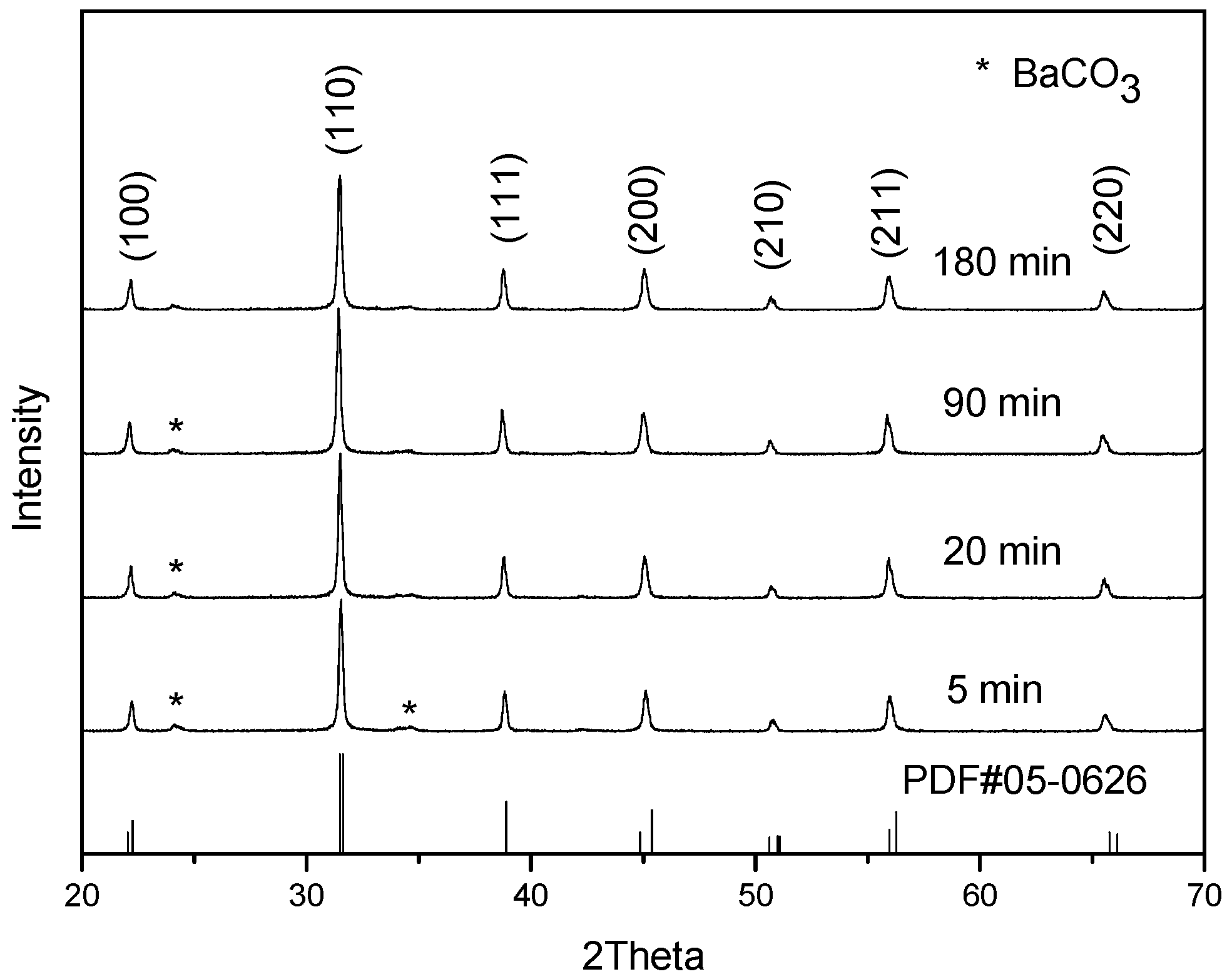
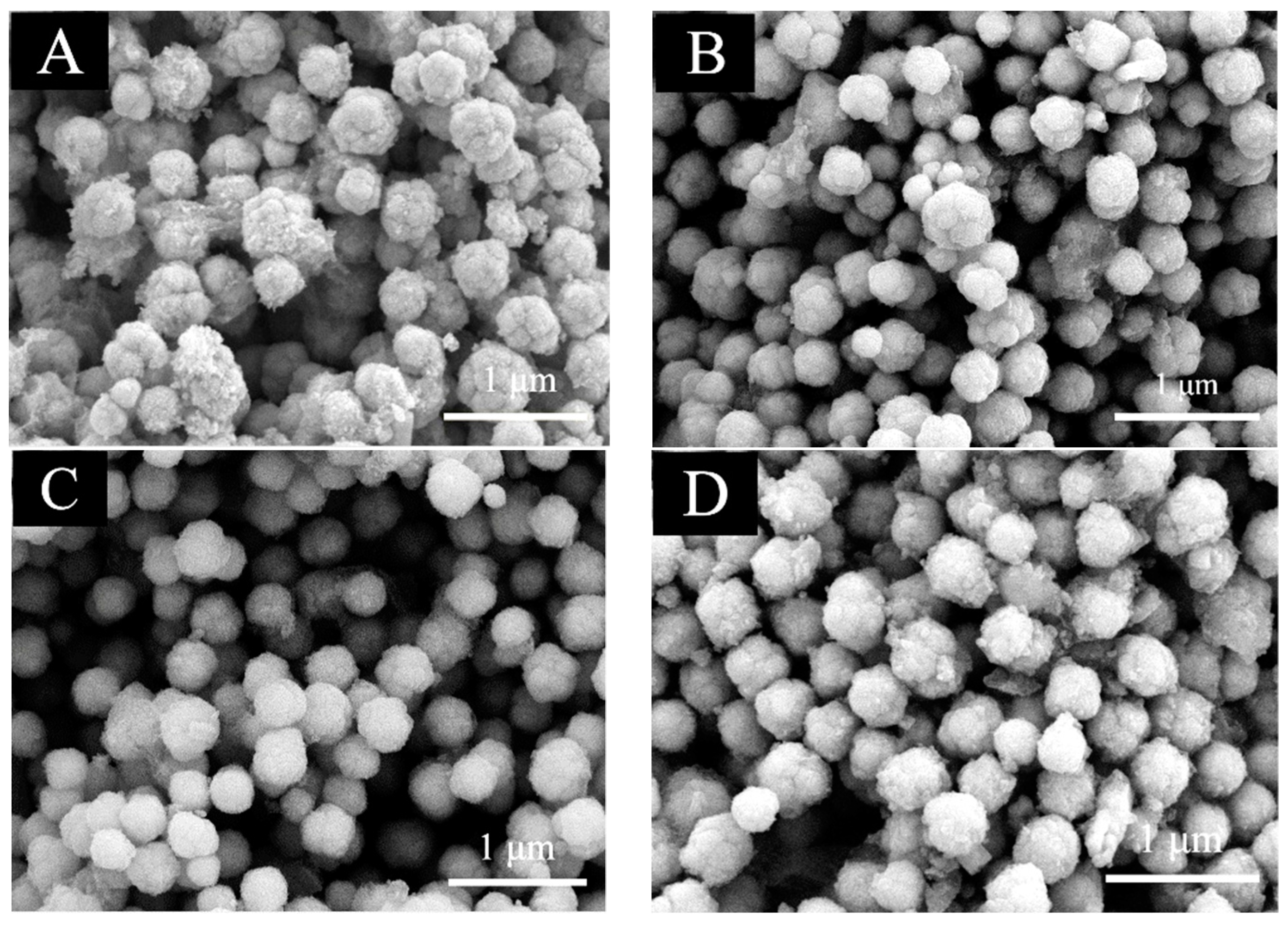

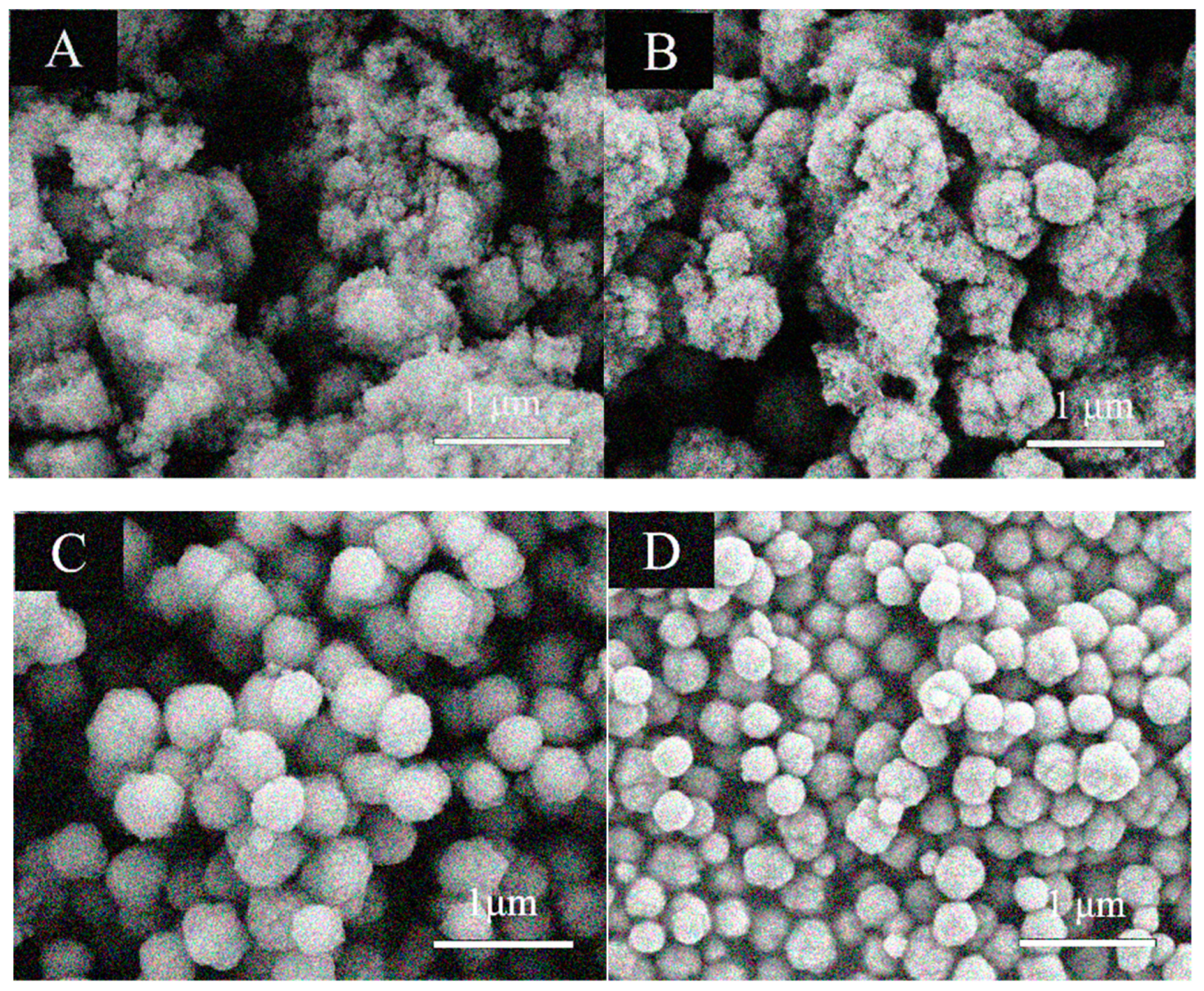

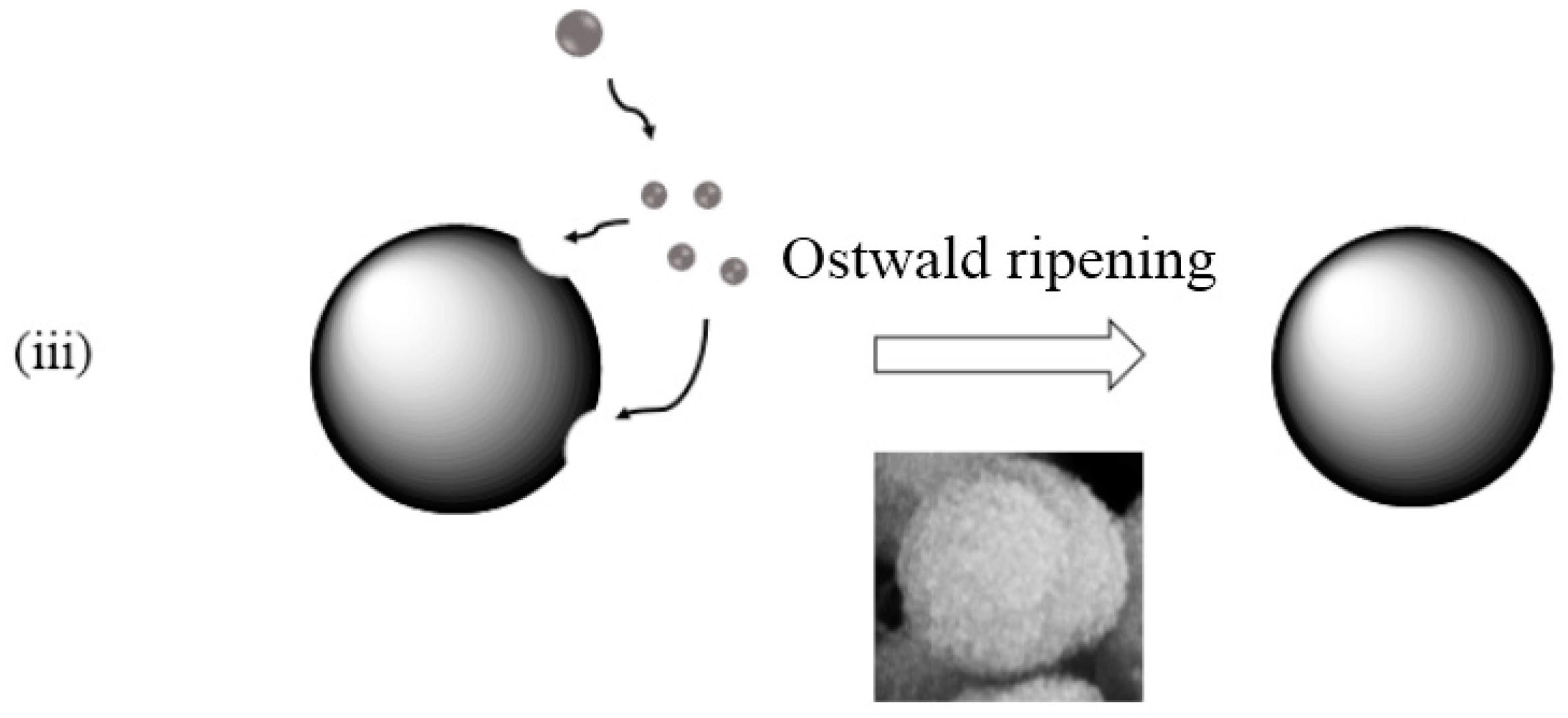
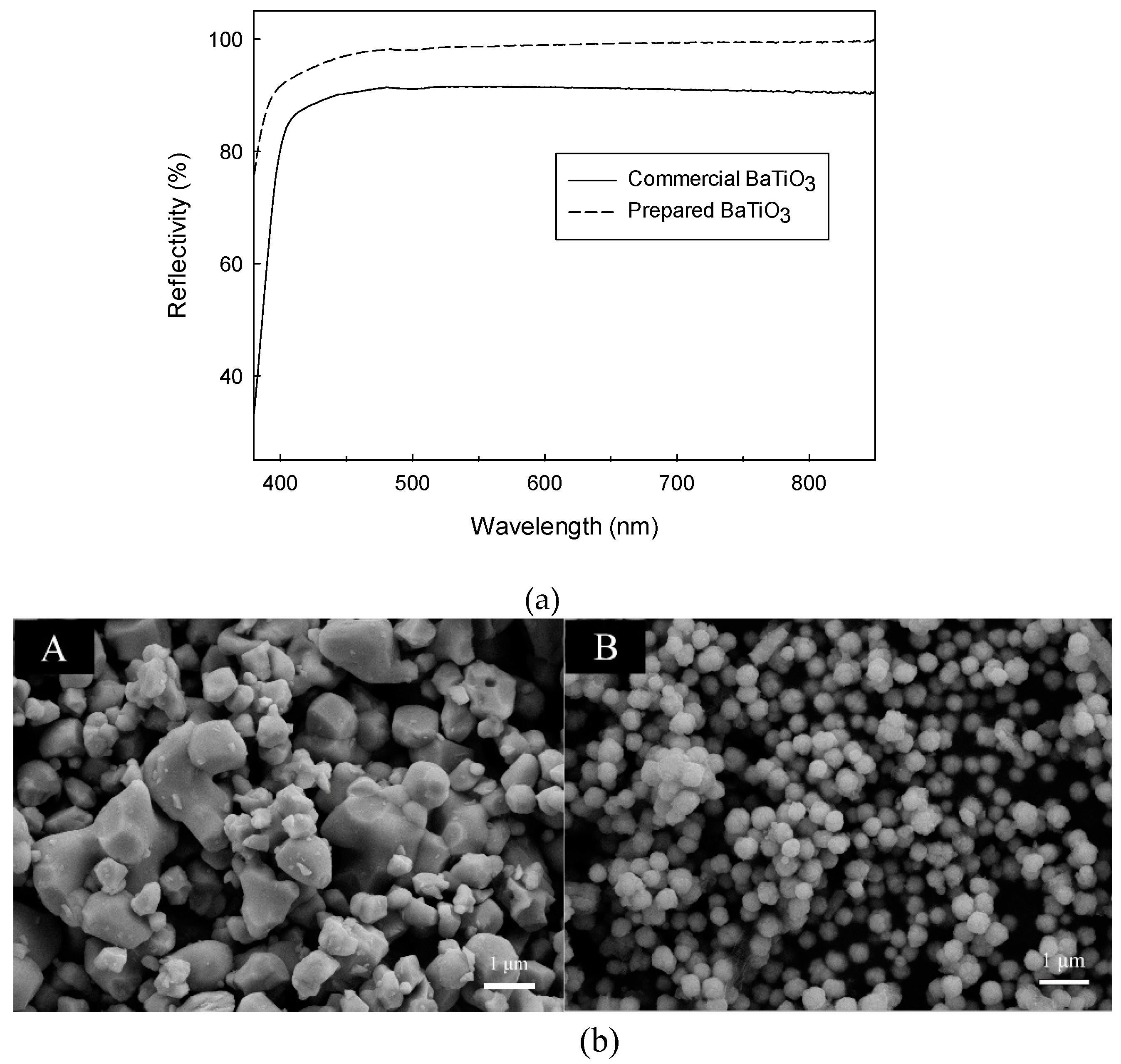
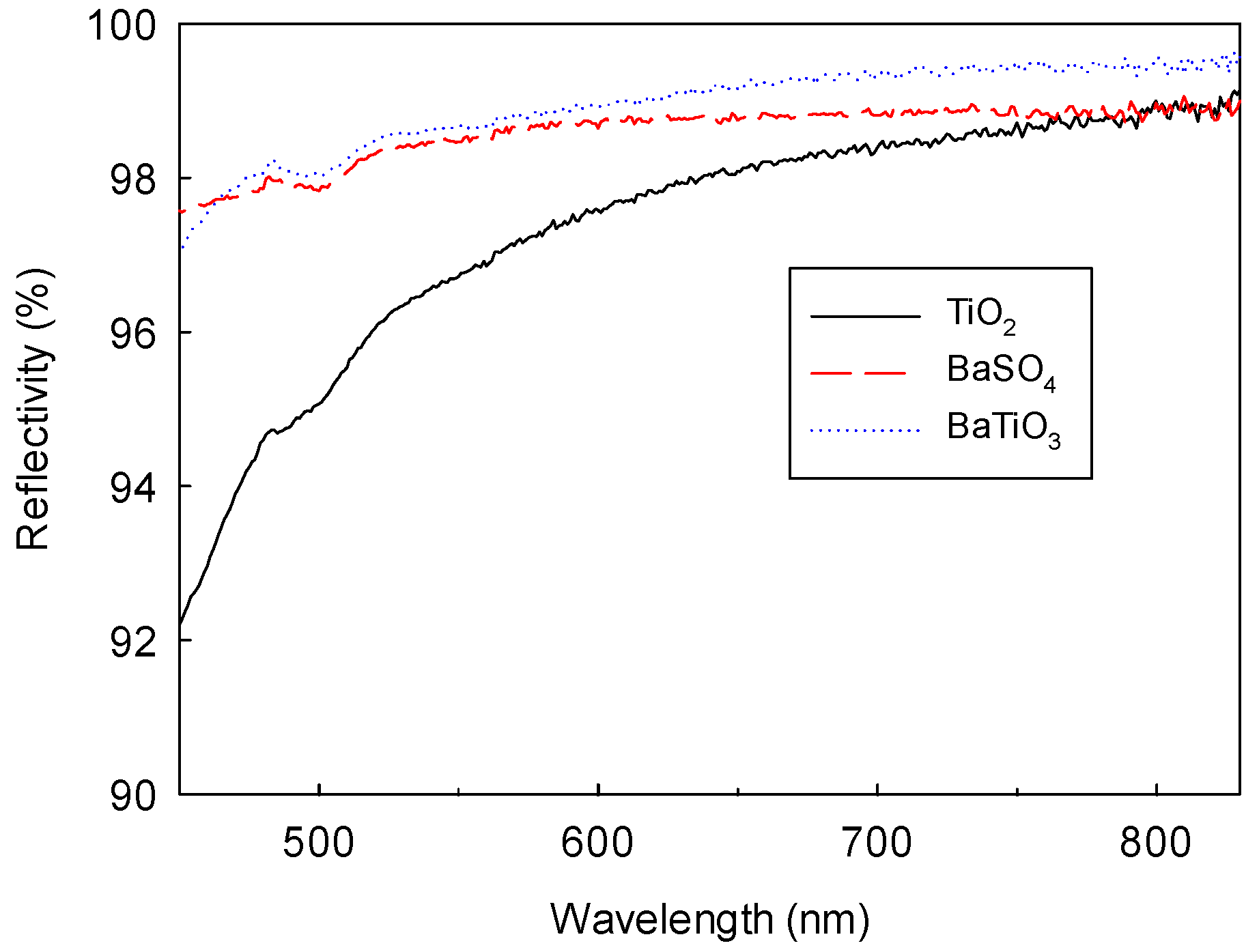
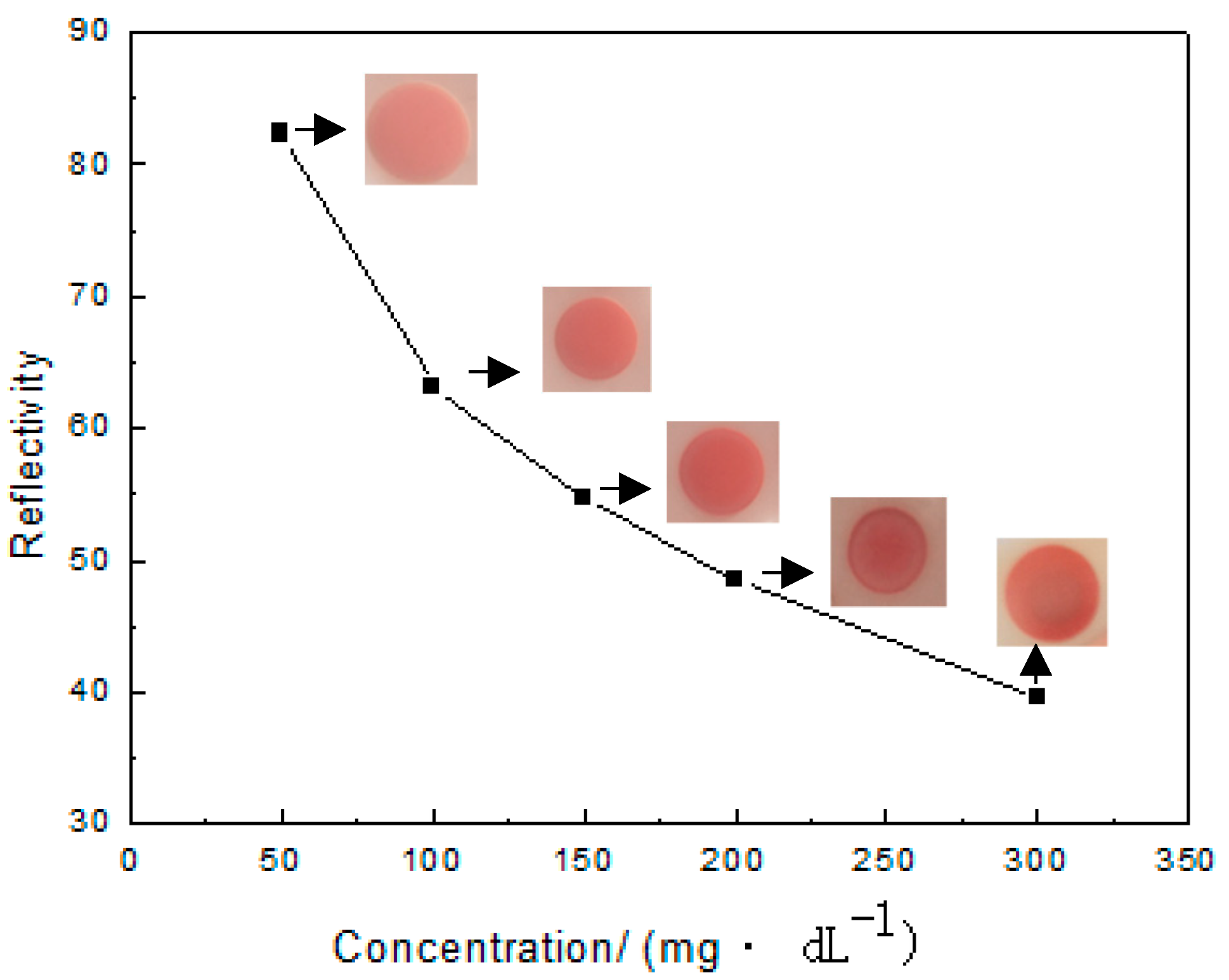
© 2019 by the authors. Licensee MDPI, Basel, Switzerland. This article is an open access article distributed under the terms and conditions of the Creative Commons Attribution (CC BY) license (http://creativecommons.org/licenses/by/4.0/).
Share and Cite
Zhang, B.; Jin, H.; Liu, X.; Guo, X.; He, G.; Yang, S. The Formation and Application of Submicron Spherical BaTiO3 Particles for the Diffusion Layer of Medical Dry Films. Crystals 2019, 9, 594. https://doi.org/10.3390/cryst9110594
Zhang B, Jin H, Liu X, Guo X, He G, Yang S. The Formation and Application of Submicron Spherical BaTiO3 Particles for the Diffusion Layer of Medical Dry Films. Crystals. 2019; 9(11):594. https://doi.org/10.3390/cryst9110594
Chicago/Turabian StyleZhang, Baodan, Haibo Jin, Xu Liu, Xiaoyan Guo, Guangxiang He, and Suohe Yang. 2019. "The Formation and Application of Submicron Spherical BaTiO3 Particles for the Diffusion Layer of Medical Dry Films" Crystals 9, no. 11: 594. https://doi.org/10.3390/cryst9110594




